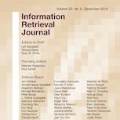Recently, machine learning has been used to substitute parts of conventional computational fluid dynamics, e.g. the cell-face reconstruction in finite-volume solvers or the curvature computation in the Volume-of-Fluid (VOF) method. The latter showed improvements in terms of accuracy for coarsely resolved interfaces, however at the expense of convergence and symmetry. In this work, a combined approach is proposed, adressing the aforementioned shortcomings. We focus on interface reconstruction (IR) in the level-set method, i.e. the computation of the volume fraction and apertures. The combined model consists of a classification neural network, that chooses between the conventional (linear) IR and the neural network IR depending on the local interface resolution. The proposed approach improves accuracy for coarsely resolved interfaces and recovers the conventional IR for high resolutions, yielding first order overall convergence. Symmetry is preserved by mirroring and rotating the input level-set grid and subsequently averaging the predictions. The combined model is implemented into a CFD solver and demonstrated for two-phase flows. Furthermore, we provide details of floating point symmetric implementation and computational efficiency.
翻译:最近,机器学习被用来替代常规计算流体动力学的某些部分,例如,定量溶液中的细胞面重建或Fluid(VOF)量法的曲度计算,后者显示粗解接口的准确性有所提高,但牺牲了趋同性和对称性。在这项工作中,提出了一种综合方法,以弥补上述缺点。我们侧重于水平设置方法中的界面重建,即量位数和孔径的计算。综合模型包括一个分类神经网络,在常规(线性)IR和神经网络IR之间作出选择,视当地界面分辨率而定。拟议方法提高了粗解的接口的准确性,并恢复了常规的IR,从而产生了第一级总体趋同性。我们通过对输入层集电网进行反射和旋转并随后对预测进行平均来保持对称性。综合模型被安装到一个CFD溶液中,并演示用于两阶段流。此外,我们提供了浮动点测量效率的计算。


























